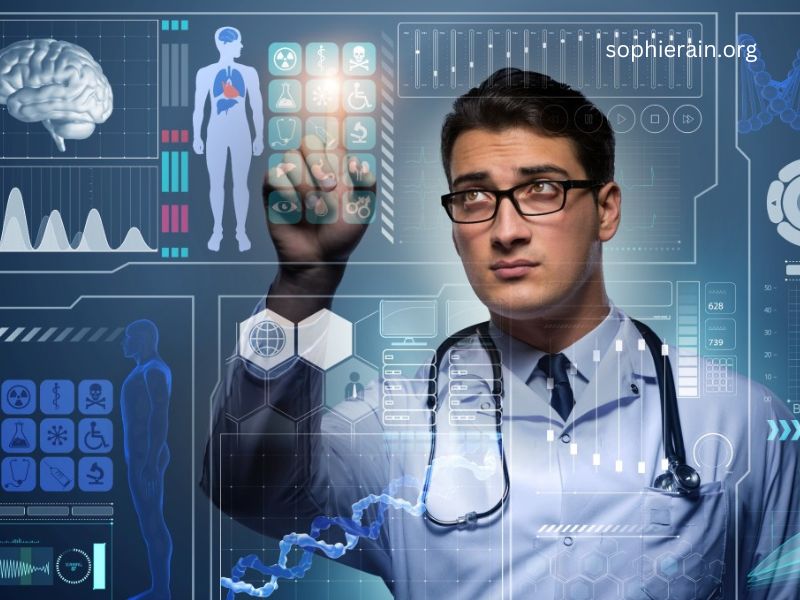In the rapidly evolving world of healthcare, technology has played a transformative role in advancing medical treatment. From cutting-edge diagnostics to improved patient care, technology has elevated healthcare standards, resulting in better outcomes and enhanced patient experiences. Over the years, medical technology advancements have contributed to reduced recovery times, increased precision in diagnostics, and more personalized treatment approaches. This article will explore the beneficial impacts of technology on medical treatment, providing an in-depth look at the innovations reshaping the healthcare industry.
The Impact of Technology on Diagnosis and Treatment
One of the greatest challenges in healthcare is diagnosing conditions accurately and promptly. With the integration of technology in medicine, diagnosis has reached an unprecedented level of precision.
- Improved Diagnostic ImagingTechnological advances in diagnostic imaging, such as MRI, CT scans, and ultrasound, allow for a detailed view of internal structures without invasive procedures. These tools enhance accuracy in detecting conditions like tumors, fractures, and organ damage, which helps healthcare professionals tailor treatment plans effectively.
- Artificial Intelligence in DiagnosisArtificial intelligence (AI) is being used to interpret complex data and assist in diagnosing conditions based on historical patient data. AI algorithms, particularly those in radiology, analyze patterns in imaging studies, enabling faster and more accurate diagnoses. This technology is also valuable in the early detection of diseases, such as cancer, which significantly increases survival rates.
- Telemedicine for Accessible CareTelemedicine has revolutionized access to healthcare services. It offers virtual consultations, reducing the need for physical visits and making healthcare more accessible to patients in remote areas. Telemedicine also minimizes healthcare costs and improves patient convenience, which has proven essential during times of crisis, like the COVID-19 pandemic.
Enhancing Patient Care and Experience
Technological advancements extend beyond diagnostics, enhancing patient care quality and experience. The integration of digital health tools has optimized patient-provider interactions, resulting in more efficient healthcare delivery.
- Electronic Health Records (EHRs)Electronic Health Records have replaced traditional paper-based systems, streamlining data storage and access. EHRs allow for real-time updates on patient information, ensuring all healthcare providers involved have the latest data, improving coordination and reducing the likelihood of errors.
- Remote Monitoring DevicesRemote patient monitoring has become an integral part of healthcare, especially for individuals with chronic conditions. Wearable devices and monitoring systems transmit real-time data to healthcare providers, allowing for ongoing assessment and timely interventions when abnormal readings are detected.
- Improved Patient Experience Through Digital PortalsPatient portals provide easy access to medical information, appointment scheduling, and test results. This technology enhances patient engagement, as individuals can monitor their own health data and communicate with healthcare providers conveniently, fostering a more interactive healthcare experience.
Innovations in Treatment Procedures
Advances in medical technology have refined various treatment procedures, making them more precise and less invasive, ultimately leading to better patient outcomes.
- Minimally Invasive SurgeriesRobotic-assisted surgeries allow for minimally invasive procedures, which result in less pain, reduced scarring, and quicker recovery times for patients. Robots controlled by surgeons perform intricate surgeries with precision that exceeds traditional techniques, especially in complex fields like neurosurgery and orthopedics.
- 3D Printing in Surgery and Prosthetics3D printing technology has been used to create customized prosthetics, implants, and even complex organ models for surgical planning. Custom prosthetics, tailored to an individual’s needs, improve comfort and functionality. This technology has particularly benefitted amputees and individuals requiring personalized medical devices.
- Gene Editing and Personalized MedicineTechniques like CRISPR gene editing allow for precise alterations in an individual’s DNA, offering the potential to cure genetic disorders at their source. Personalized medicine, driven by genetic data, enables treatments tailored to a patient’s unique genetic profile, making therapies more effective and reducing potential side effects.
Artificial Intelligence and Machine Learning in Drug Development
The process of developing new drugs is typically time-consuming and costly. However, AI and machine learning have accelerated drug discovery and testing, creating more effective treatments at a faster pace.
- Accelerated Drug DiscoveryAI algorithms process vast amounts of data to identify potential drug candidates. By analyzing patterns in chemical compounds and predicting their interactions with human cells, AI reduces the time needed to discover viable drug options. This approach has led to the rapid development of treatments for diseases like COVID-19, where traditional methods would have taken much longer.
- AI in Clinical TrialsMachine learning tools identify patient candidates for clinical trials more efficiently, enhancing the selection process to ensure diverse and representative samples. These technologies also assist in monitoring trial participants, improving accuracy in data collection, and adjusting treatments based on real-time data, leading to better and faster outcomes.
Revolutionizing Emergency and Critical Care
Technology has also enhanced critical and emergency care, allowing healthcare providers to respond more effectively to life-threatening situations.
- Automated External Defibrillators (AEDs)AEDs have become increasingly accessible in public places, empowering non-medical personnel to provide life-saving interventions in emergencies. This technology has saved countless lives by providing immediate treatment during cardiac arrest.
- Real-Time Data in Emergency RoomsEmergency rooms rely on data integration systems that allow for real-time tracking of patient vitals, symptoms, and test results. This rapid data access supports healthcare providers in making prompt, informed decisions, which is crucial in high-stakes environments.
- Drones in Emergency MedicineDrones are being used to deliver medical supplies, including blood and essential drugs, to remote or disaster-affected areas. In emergency medicine, drones offer a faster and more reliable means of supply delivery, particularly in hard-to-reach locations.
Big Data in Public Health
The use of big data in public health initiatives has been instrumental in identifying health trends, predicting outbreaks, and improving overall health outcomes on a larger scale.
- Epidemiological TrackingBig data enables healthcare organizations to track disease spread, identify outbreak sources, and predict future risks. With this information, health agencies can proactively prepare for potential public health crises, as seen in the data-driven responses during the COVID-19 pandemic.
- Predictive Analytics in Healthcare PlanningPredictive analytics tools analyze historical data to forecast future healthcare needs. This technology helps hospitals and health organizations prepare resources, optimize staffing, and ensure that necessary medical supplies are available, leading to more efficient healthcare delivery.
- Health Apps for Preventative CareMobile health apps monitor daily habits and encourage preventative care. These apps offer insights into dietary, fitness, and sleep patterns, allowing users to make informed lifestyle choices that reduce the risk of chronic diseases. By focusing on prevention, healthcare systems can alleviate the burden of treatable conditions, leading to healthier populations.
The Future of Technology in Medical Treatment
As technology continues to advance, the future of medical treatment holds even greater possibilities. Emerging innovations, such as nanotechnology, robotics, and AI-driven diagnostics, promise to bring transformative changes to healthcare. The evolution of telemedicine, remote monitoring, and wearable health devices will further bridge gaps in care accessibility, particularly in underserved regions.
- The Promise of Nanotechnology in MedicineNanotechnology has shown promise in delivering drugs directly to affected cells, increasing treatment efficacy and minimizing side effects. Cancer treatments, for example, could become more targeted, reducing the harmful impacts on healthy cells and enhancing patient recovery rates.
- Wearable Technology’s Role in Preventative CareWearables are evolving beyond tracking basic fitness metrics, integrating sophisticated sensors that monitor vital health metrics in real time. These devices enable early detection of potential health issues, leading to timely interventions and reducing the likelihood of severe complications.
- Augmented Reality in Surgical TrainingAugmented reality (AR) is transforming medical education by providing immersive training experiences for future surgeons. AR systems simulate complex surgical procedures, enabling students to practice in a realistic but controlled environment, ultimately improving their skill levels and reducing errors in real-world applications.
Conclusion
Technology has undoubtedly had a beneficial effect on medical treatment, fundamentally changing how healthcare is delivered, accessed, and managed. From advanced diagnostic tools to innovations in personalized treatment, the role of technology in medicine has led to more efficient, accurate, and accessible healthcare. As advancements continue, the future of healthcare looks promising, with new technologies set to enhance the patient experience and improve treatment outcomes further. The fusion of technology with medicine will undoubtedly continue to revolutionize the field, ultimately saving lives and elevating healthcare standards across the globe.






